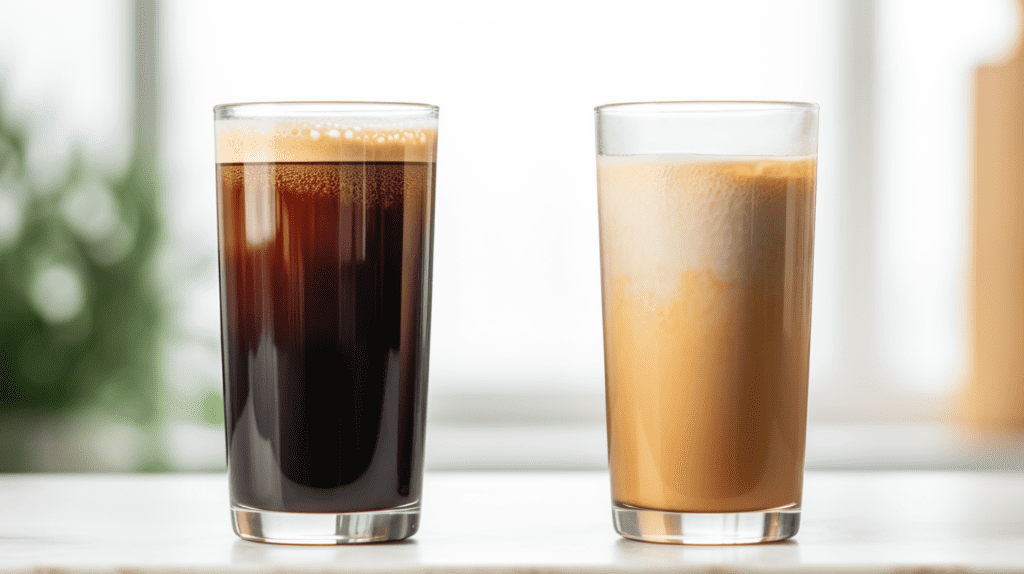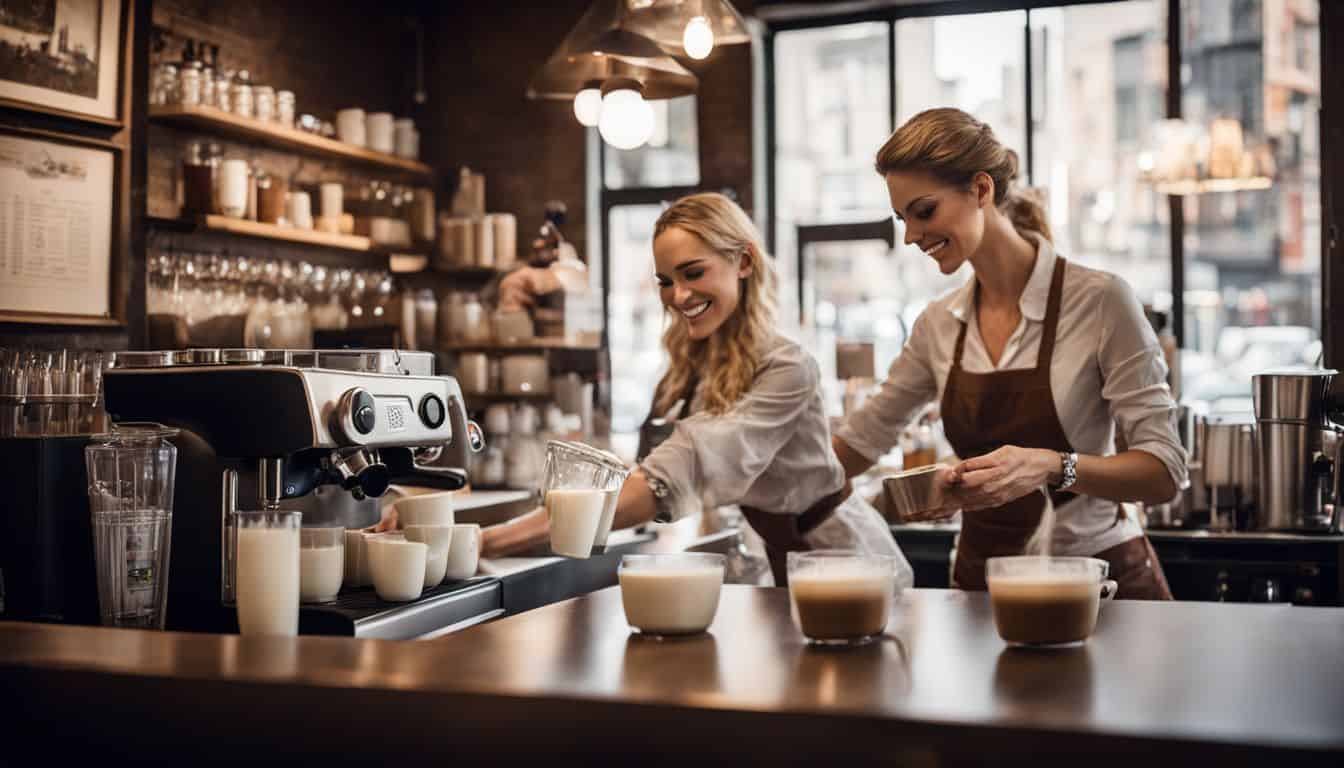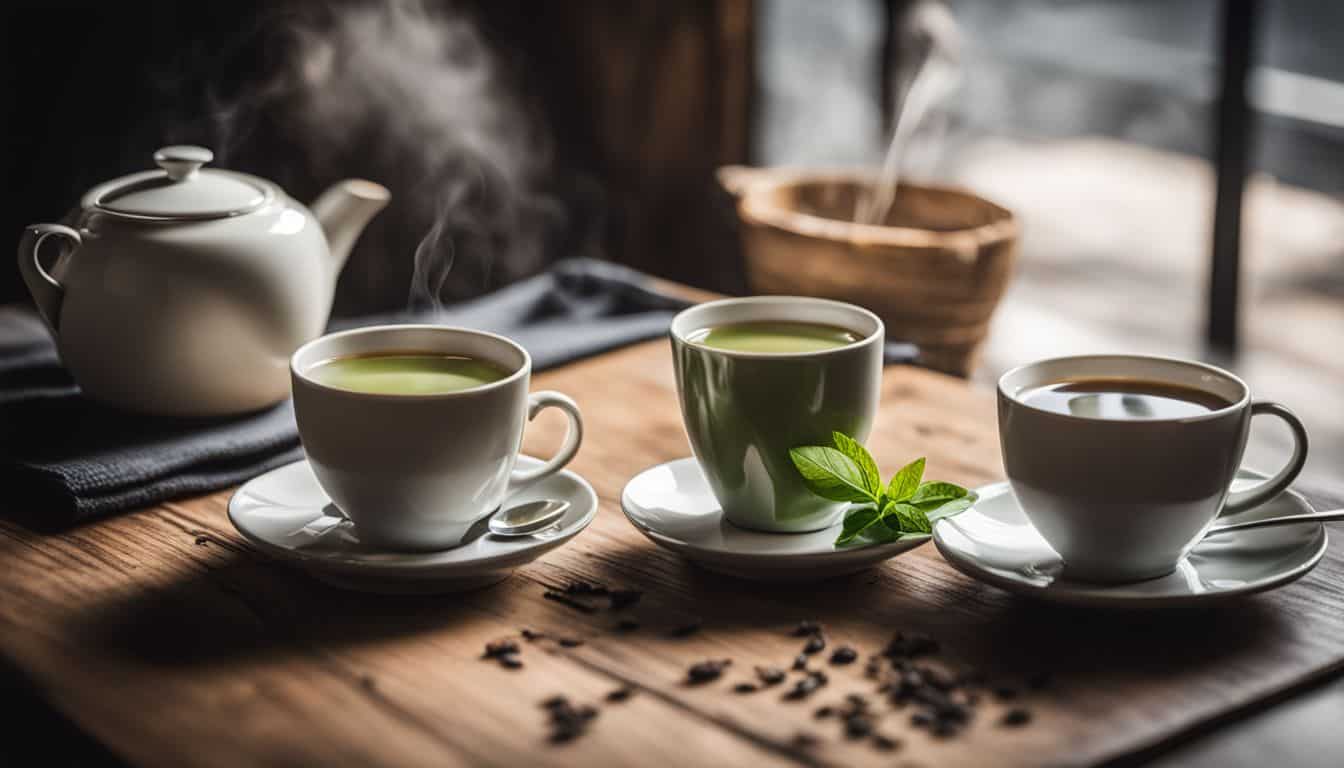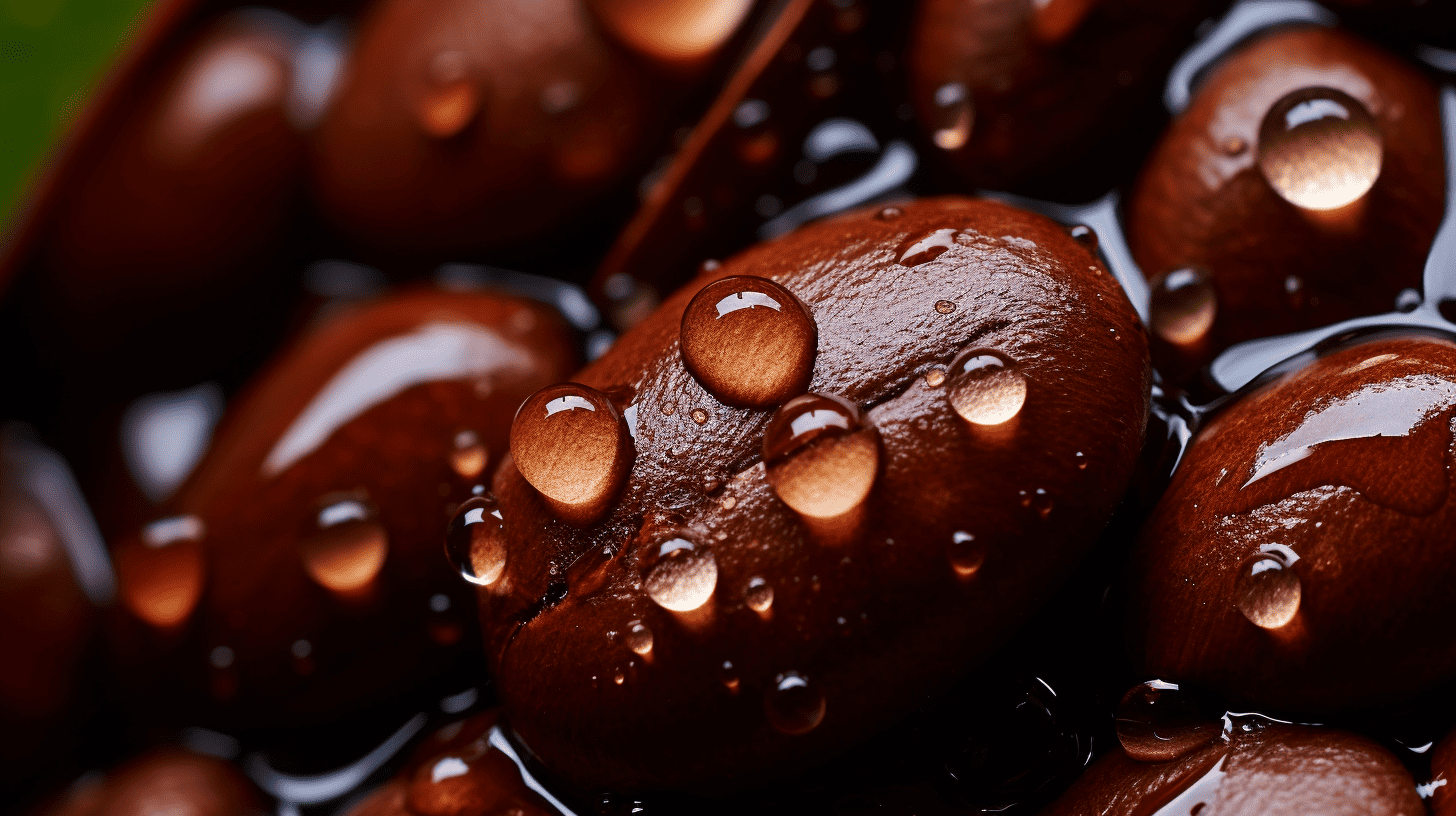Are you a coffee enthusiast who gets confused over the difference between coffee and latte? Trust me, I’ve been there too! In fact, whether it’s about their respective brewing processes or how distinct they taste, many people tend to mix them up.
To clear up this murkiness, I’ve delved deep into the world of coffees and lattes and drew out some fascinating facts; for instance, do you know that traditional drip-brewed coffee packs more caffeine punch than its creamier cousin – Latte? So let’s plunge in together to unwrap more about these much-loved beverages.
You’re just four minutes away from becoming a total pro at distinguishing between your favorite morning pick-me-ups!
Key Takeaways
- Latte is made with espresso and has a creamy, smooth taste due to the addition of steamed milk.
- Coffee is typically brewed using the drip brewing method, resulting in a bolder and stronger flavor.
- Lattes generally have less caffeine than coffee, making them a milder pick-me-up option.
- Lattes offer more customization options with flavored syrups, while coffee can be enjoyed plain or with added milk and sugar.
Brewing Processes
The brewing process for a latte involves using espresso, while coffee is typically made using the drip brewing method.
Here is a comprehensive table summarizing the key differences between coffee and latte:
| Coffee | Latte |
|---|---|
| Made by brewing ground coffee beans in hot water | Made with espresso, steamed milk, and a small amount of milk foam on top |
| Typically served in larger portions | Smaller drink, often 8-15 ounces |
| Strong and robust flavor | Milder flavor due to the addition of steamed milk |
| No milk added | Contains steamed milk |
| No added flavorings or syrups | Can be customized with flavored syrups or toppings |
| Can be brewed in many different ways | Made with espresso, which is brewed under high pressure |
| Contains more caffeine than a latte | Made with espresso, which is brewed under high-pressure |
| Basic component of many coffee drinks | Often served as a standalone drink |
Please note that the information provided is a general overview, and variations in preparation and serving sizes may exist.
Latte: Uses espresso
A latte starts with a shot of espresso. It’s the base for the drink. Then, hot milk goes into the cup. The mix makes a rich and smooth taste. Steam brings froth to the top of the milk.
This part is fun to make! A little swirl can give your latte art! You also have more choices with lattes than black coffee. Add flavors like vanilla or caramel to change up your cup even more!
Coffee: Typically made with drip brewing method
I love coffee because it’s made using a drip brewing method. This means that hot water is poured over ground coffee beans in a filter, allowing the liquid to drip through and collect in a pot or carafe.
The result is a bold and strong flavor that many coffee enthusiasts enjoy. Drip brewing allows for larger quantities of coffee to be made at once, making it ideal for sharing with friends or enjoying throughout the day.
So if you prefer your brew with a robust taste, drip-brewed coffee is definitely worth trying!
Taste Differences
The taste of a latte is creamy, smooth, and milky, while coffee has a bolder and stronger flavor.
Latte: Creamy, smooth, and milky
A latte is a creamy and smooth coffee beverage. It gets its texture from the addition of steamed milk, which gives it a milky taste. Lattes are often enjoyed for their mild and mellow flavor, making them a popular choice for those who prefer a less intense coffee experience.
The frothed milk on top adds an extra layer of creaminess and makes lattes visually appealing. With its velvety texture and delightful combination of coffee and milk, lattes are a comforting and indulgent treat for any coffee lover.
Coffee: Bolder, stronger flavor
Coffee has a bolder and stronger flavor compared to a latte. This is because coffee is brewed using the drip brewing method, which allows the water to extract more of the flavors from the ground coffee beans.
The result is a robust and intense taste that is loved by many coffee enthusiasts. Whether you prefer it black or with milk and sugar, coffee delivers a rich and satisfying flavor experience.
So if you’re looking for a beverage that packs a punch in terms of taste, coffee is definitely the way to go!
Caffeine Content
Latte generally contains less caffeine than coffee.
Latte: Generally contains less caffeine than coffee
When it comes to caffeine content, lattes usually have less caffeine than a regular cup of coffee. So if you’re looking for a milder pick-me-up, a latte might be the better choice for you.
Coffee: Higher caffeine content
Coffee has a higher caffeine content compared to lattes. This means that if you’re looking for a beverage with a stronger kick of energy, coffee is the way to go. The brewing process for coffee typically involves using ground coffee beans and water, resulting in a bold and robust flavor profile.
So, if you need that extra boost in the morning or throughout the day, a cup of black coffee might be just what you need.
Beverage Versatility
The latte offers a wide range of customization options, allowing you to add different flavors and syrups for a personalized experience.
Latte: Can be customized with various flavors and syrups
I love how lattes can be customized with different flavors and syrups! Whether you want a classic vanilla latte or something more adventurous like caramel or hazelnut, the possibilities are endless.
You can also add toppings like whipped cream or chocolate sprinkles to make it even more delicious. The ability to personalize your latte allows you to create a beverage that perfectly suits your taste preferences.
It’s one of the reasons why lattes are so popular among coffee lovers who enjoy experimenting with different flavor combinations. So go ahead and get creative with your latte customization!

Coffee: Can be enjoyed black or with added milk and sugar
Coffee is a versatile beverage that can be enjoyed in different ways. You can drink it black for a bold and strong flavor, or you can add milk and sugar to customize the taste according to your preference.
Whether you like it creamy and smooth or prefer a sweeter flavor, coffee offers flexibility in how you enjoy it. So go ahead and savor your cup of coffee just the way you like it!
Conclusion on Difference Between Coffee And Latte
The main difference between coffee and latte lies in the brew method and taste. Lattes are made with espresso and have a creamy texture due to the addition of steamed milk.
They are milder in flavor compared to black coffee. Additionally, lattes offer more customization options with flavored syrups, while coffee can be enjoyed plain or with added milk and sugar.
Both beverages have their unique qualities, catering to different taste preferences throughout the day.
What Makes Espresso and Cappuccino Different from Coffee and Latte?
Espresso and cappuccino distinction lies in their preparation method and ingredient ratios. While coffee and latte are brewed drip coffees, espresso is a strong shot produced by forcing hot water through finely ground beans. Cappuccino, on the other hand, blends equal parts of espresso, steamed milk, and milk foam, creating a balanced and creamy taste.
FAQs on Difference Between Coffee And Latte
1. What is the difference between coffee and latte?
Coffee refers to a brewed beverage made from roasted coffee beans, while a latte is a type of coffee-based drink that combines espresso with steamed milk and a small amount of foam.
2. Does coffee have milk like a latte?
No, regular coffee does not contain milk like a latte. Coffee is typically served black or with optional additions such as cream or sugar.
3. How does the taste of coffee differ from a latte?
The taste of plain black coffee is often stronger and more bitter compared to the smoother and milder flavor profile of a latte, which has the added sweetness and creaminess from the steamed milk.
4. Can I make a homemade latte using regular brewed coffee?
Yes, you can make a homemade version of a latte by adding steamed milk (heated on the stovetop or using an espresso machine) to your regular brewed coffee. However, it may not have the exact same consistency as one made with espresso.





Leave a Reply